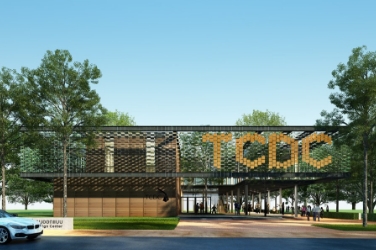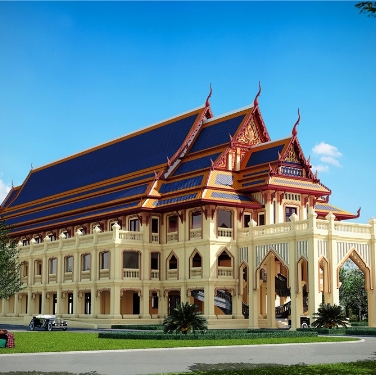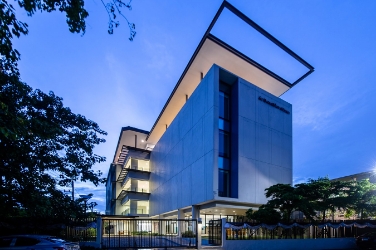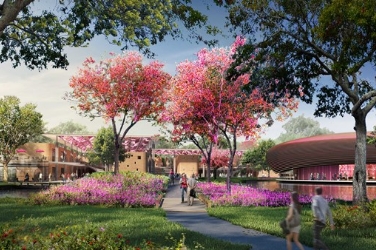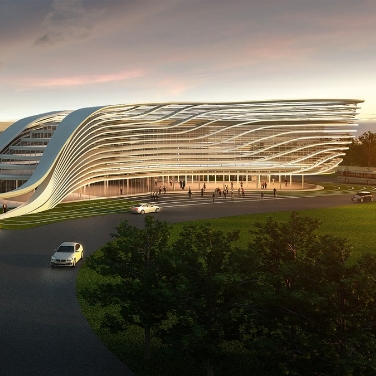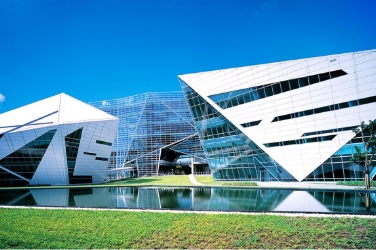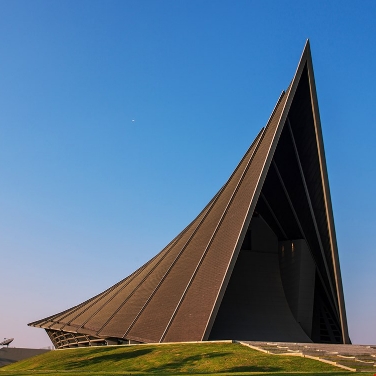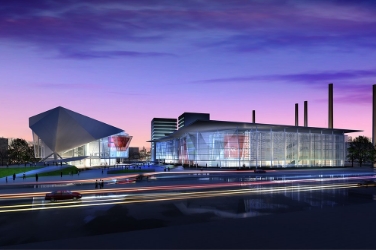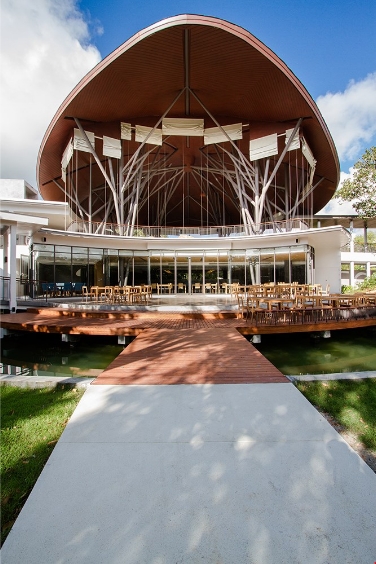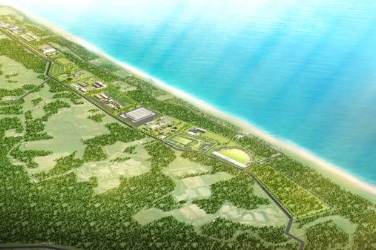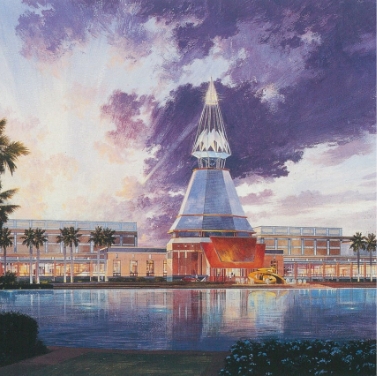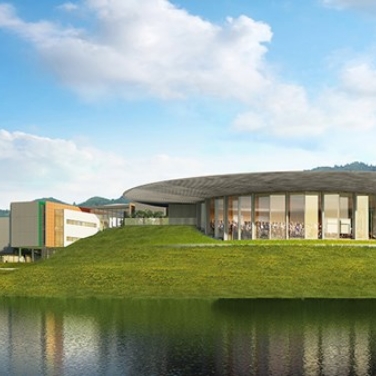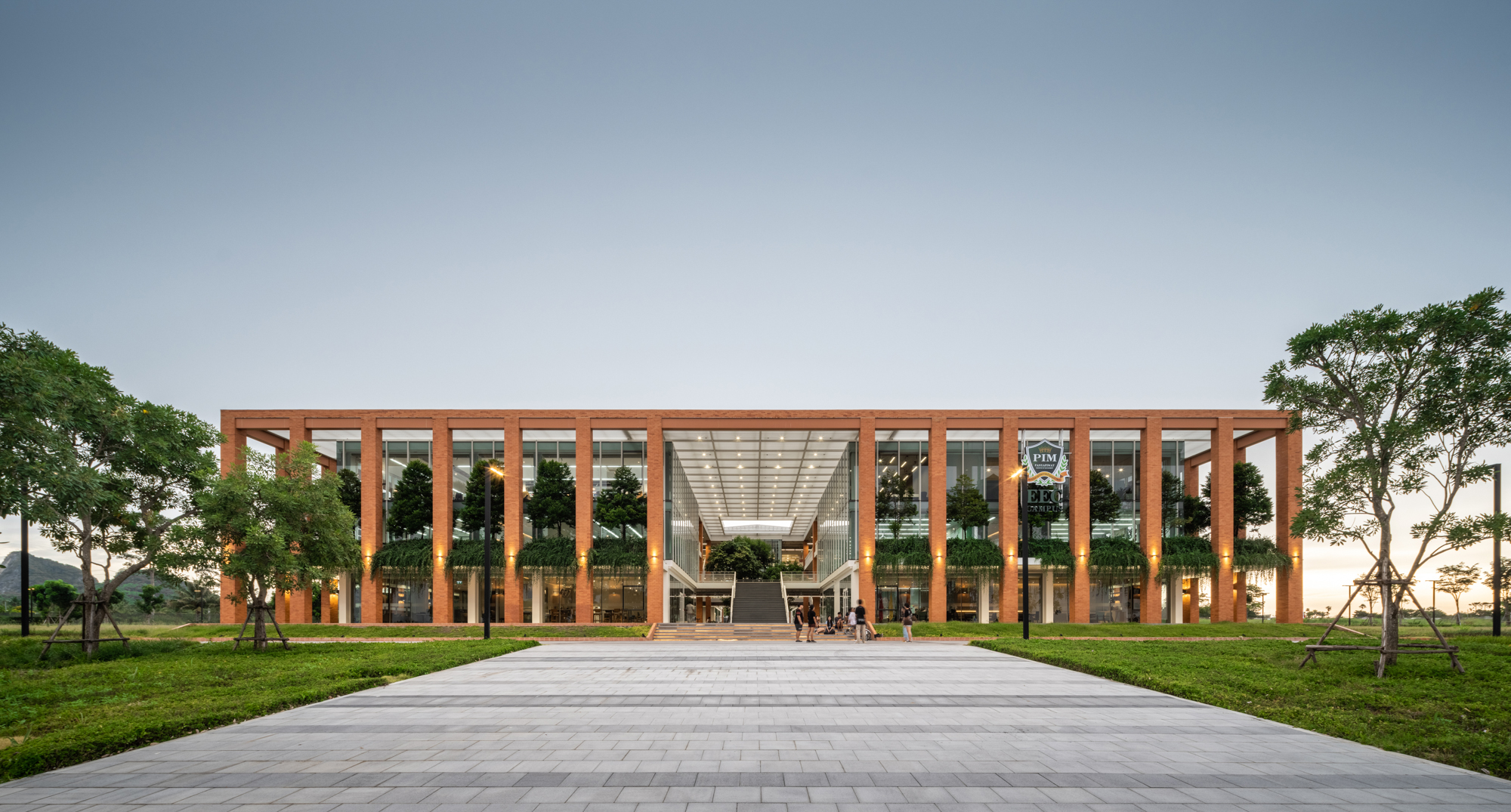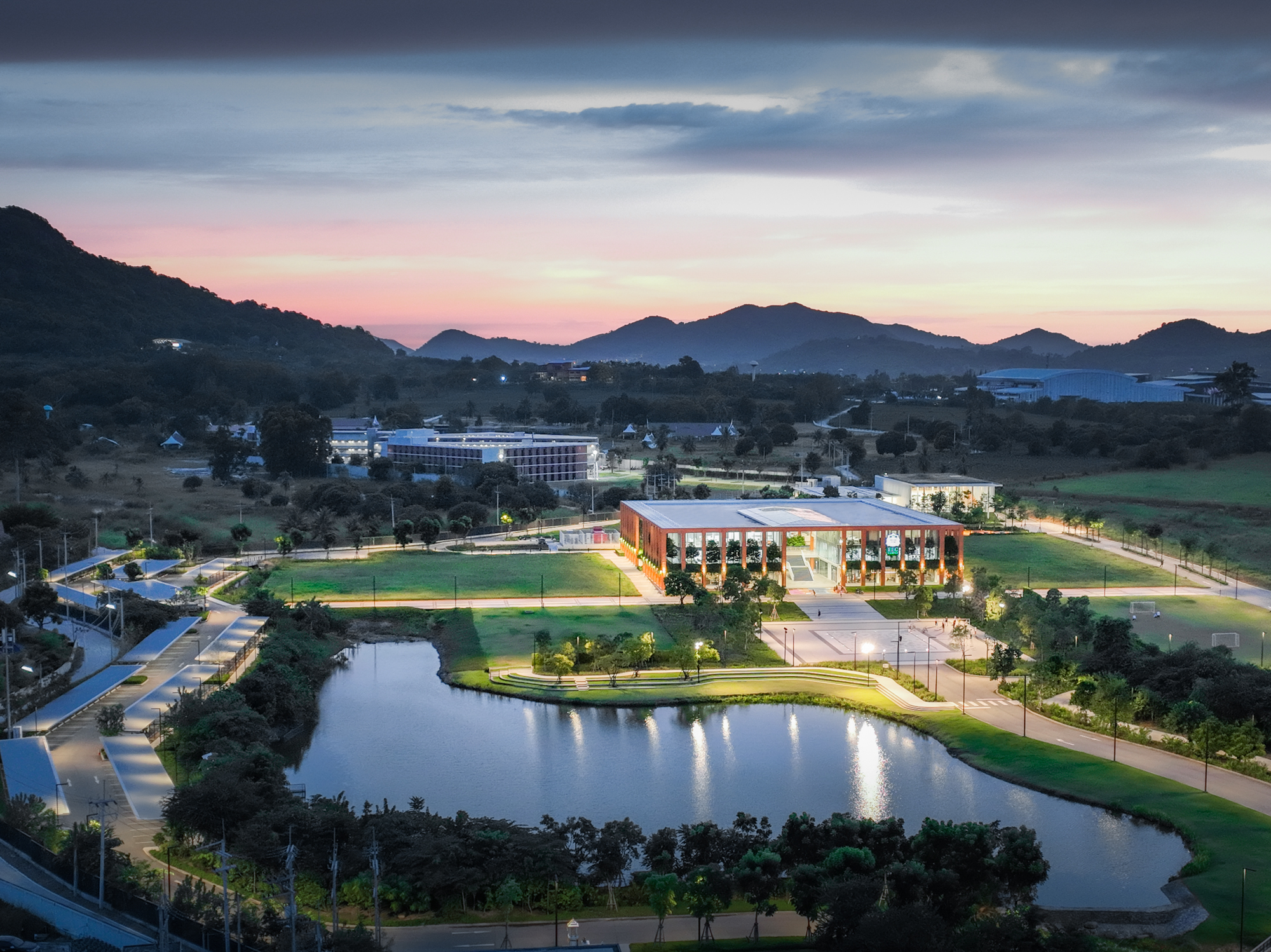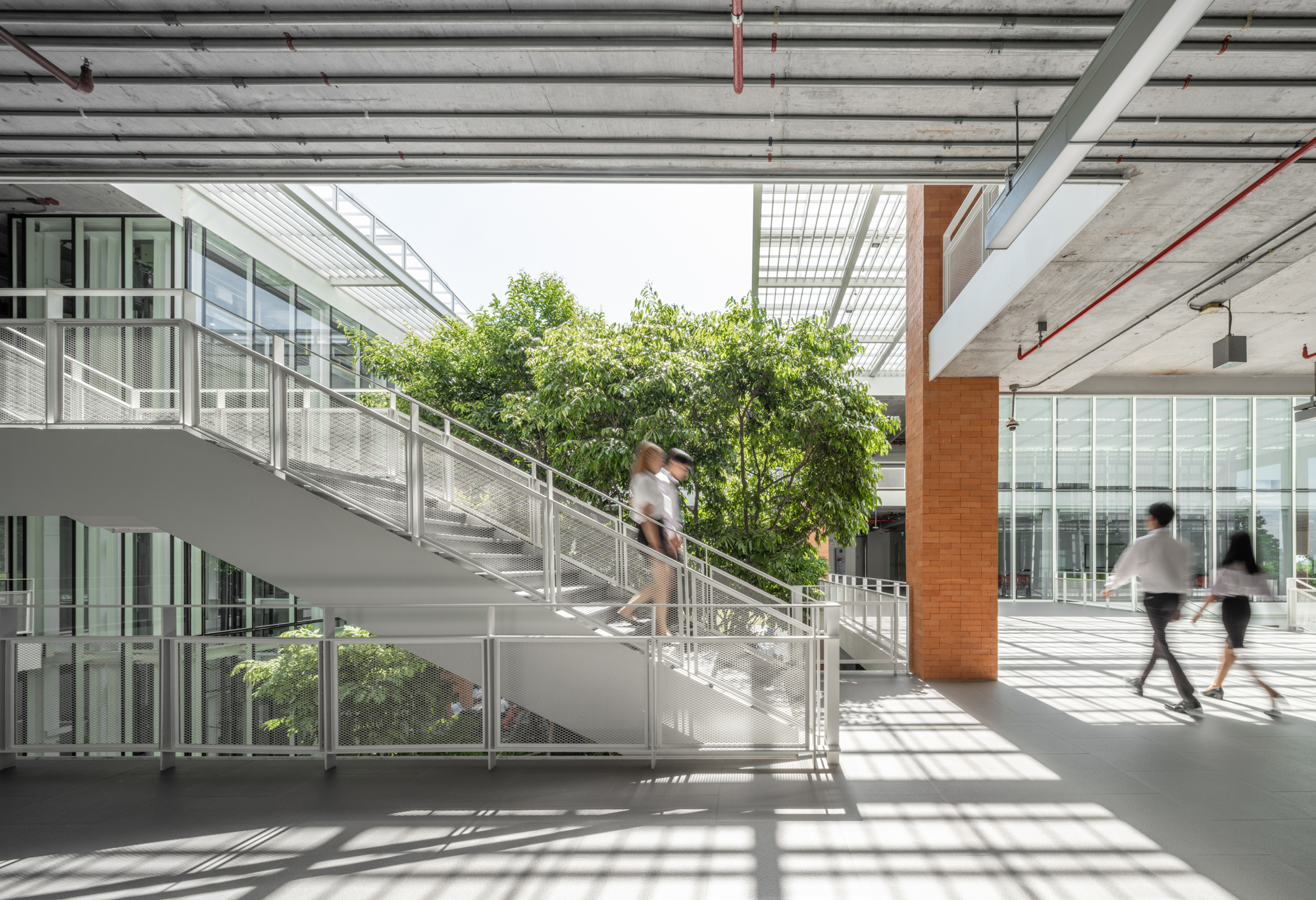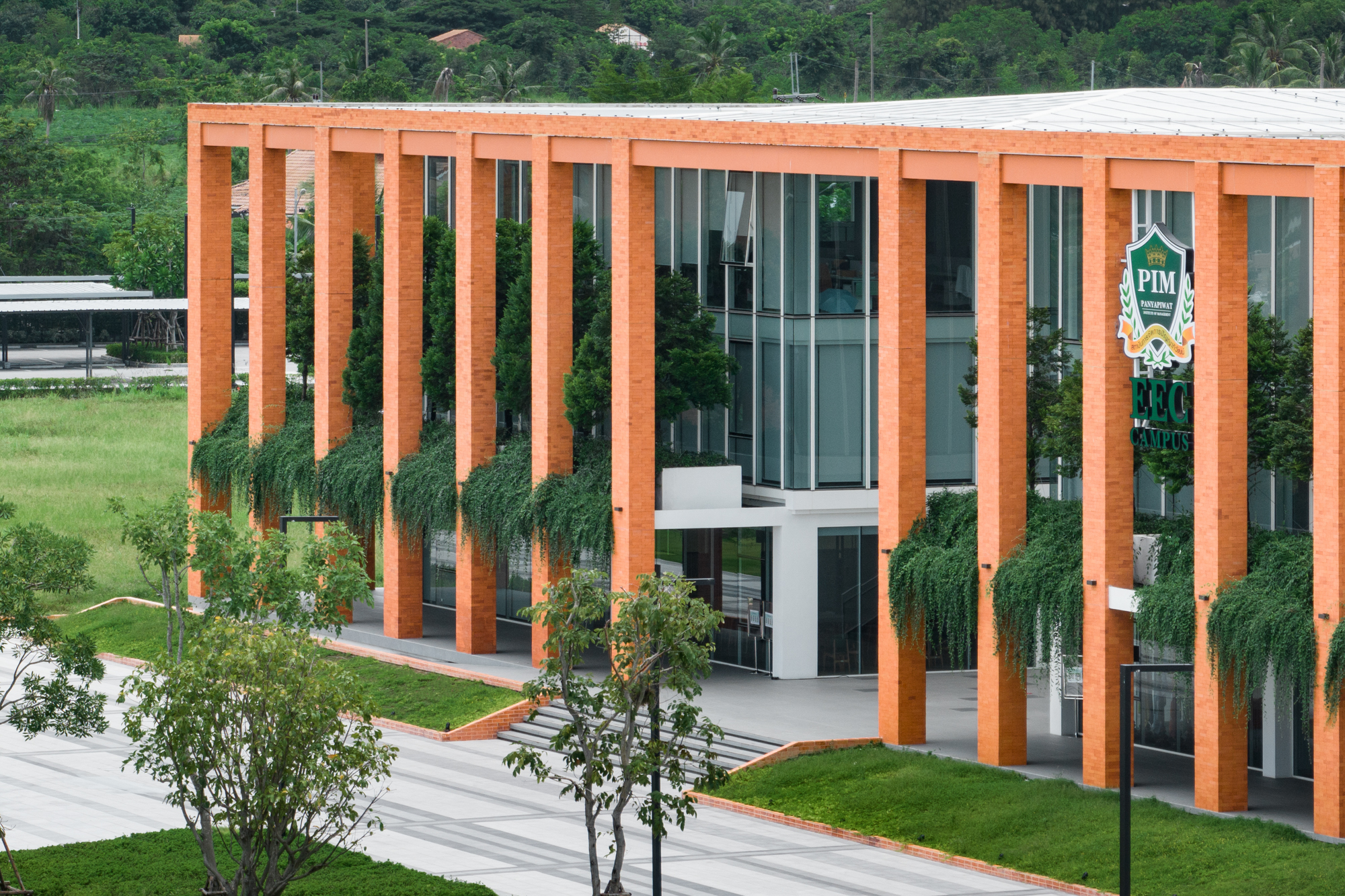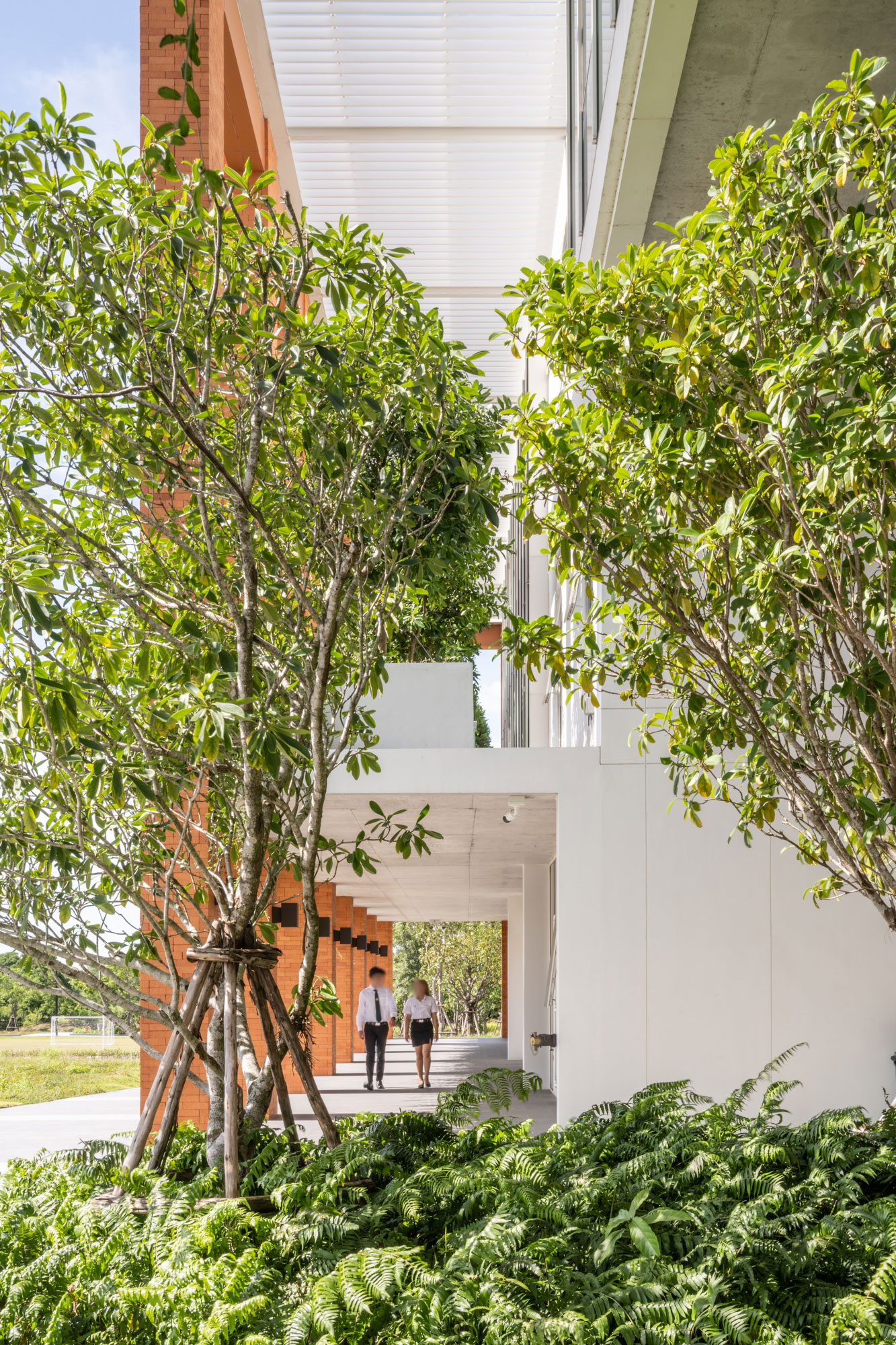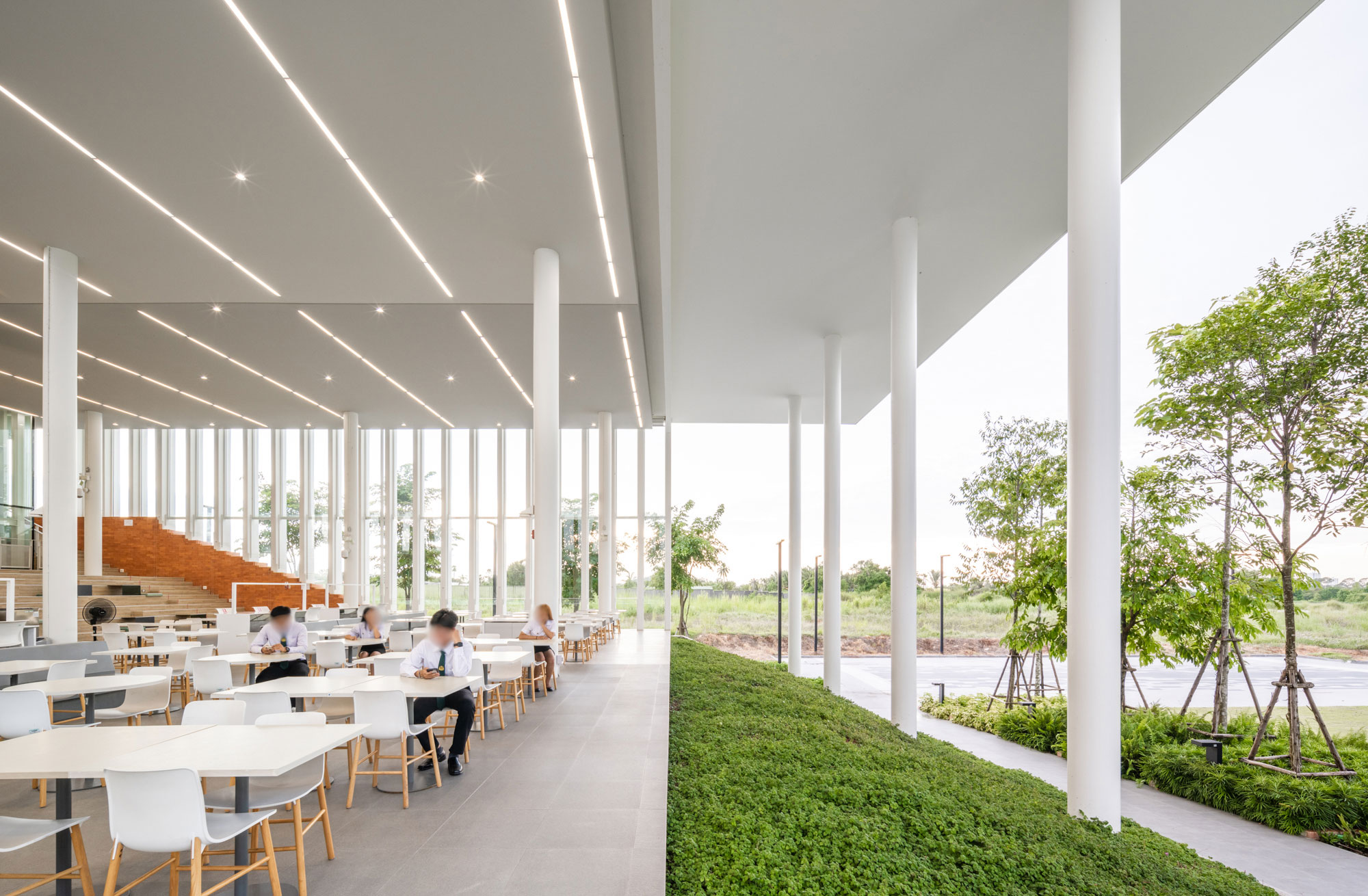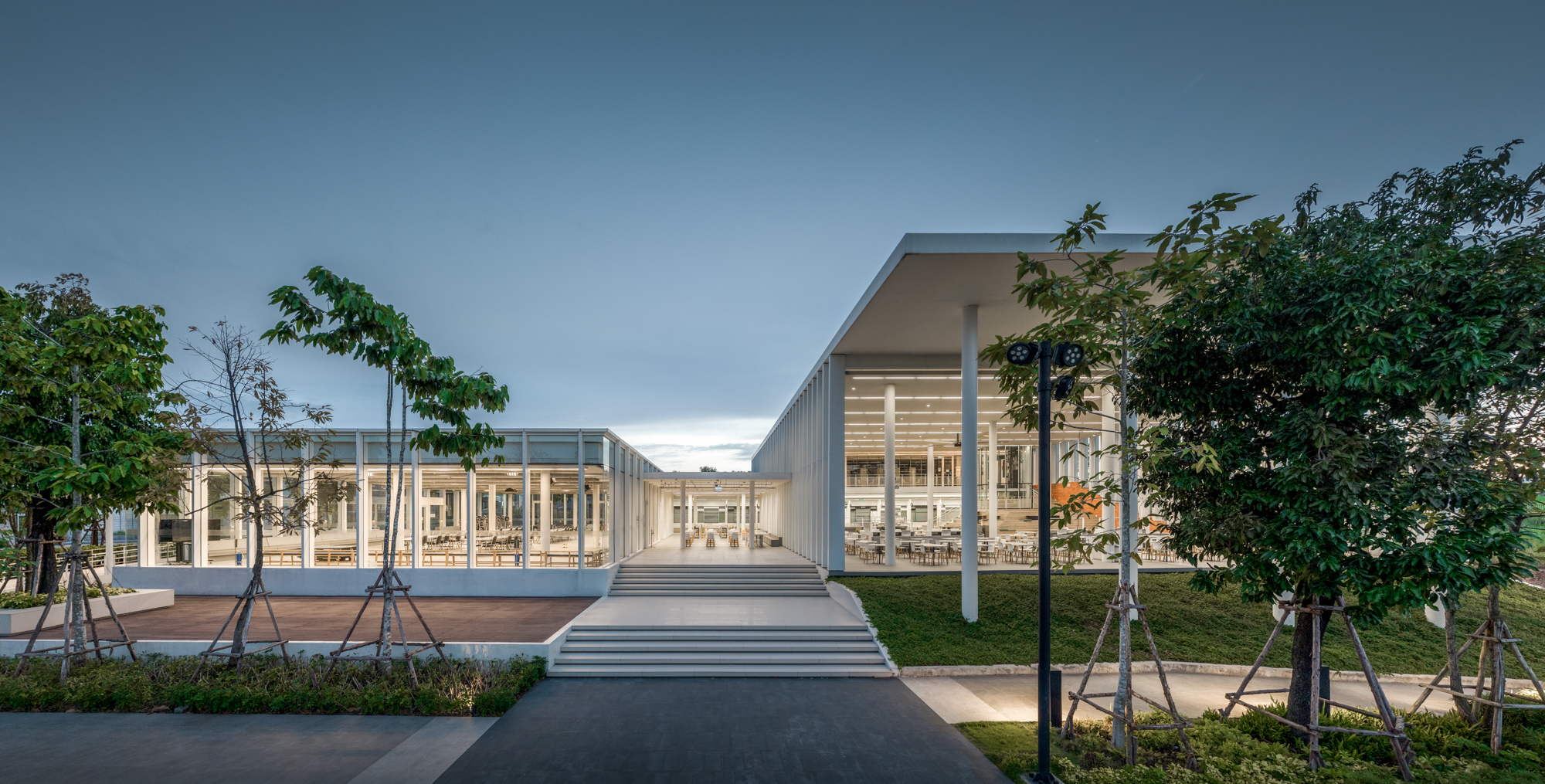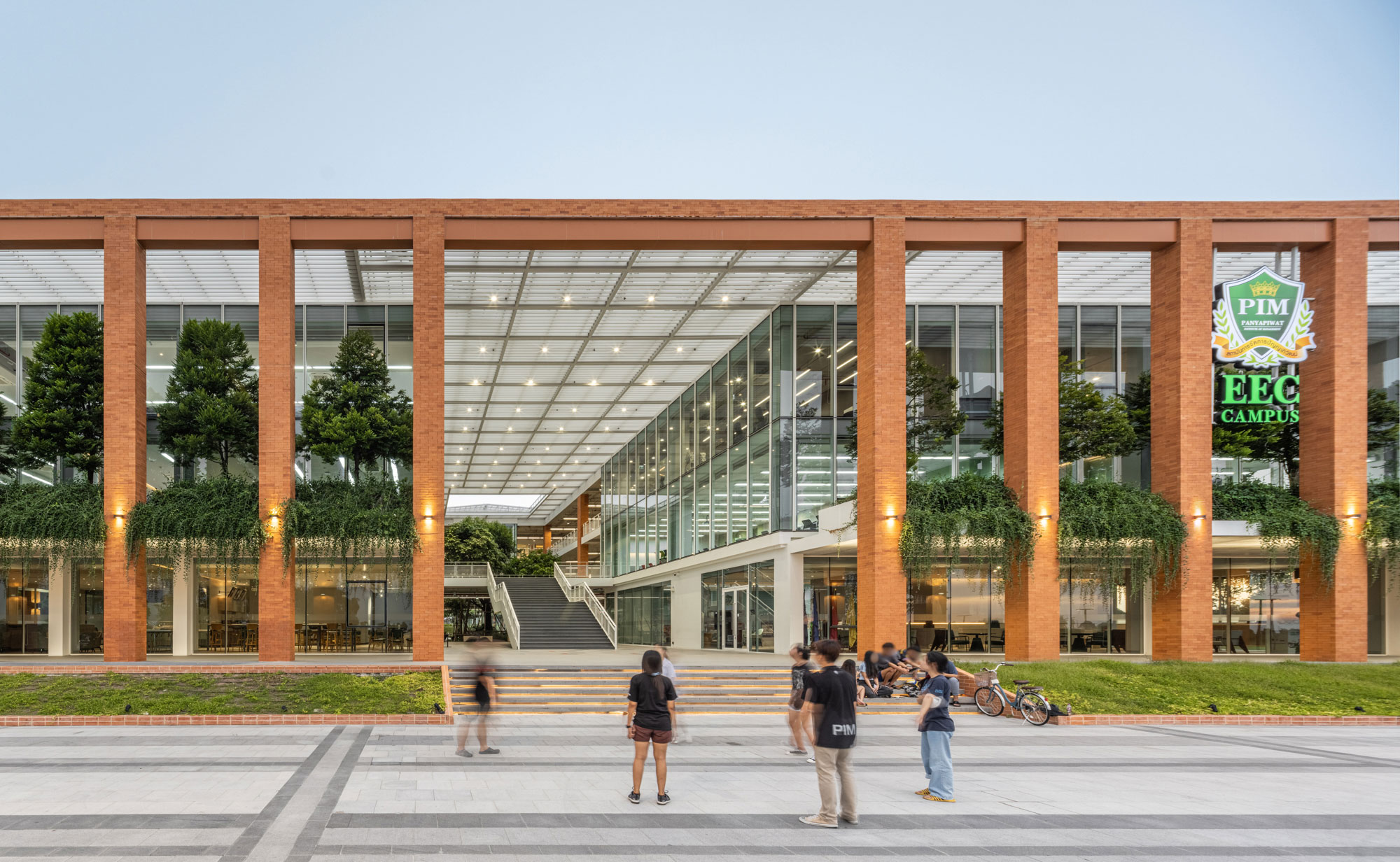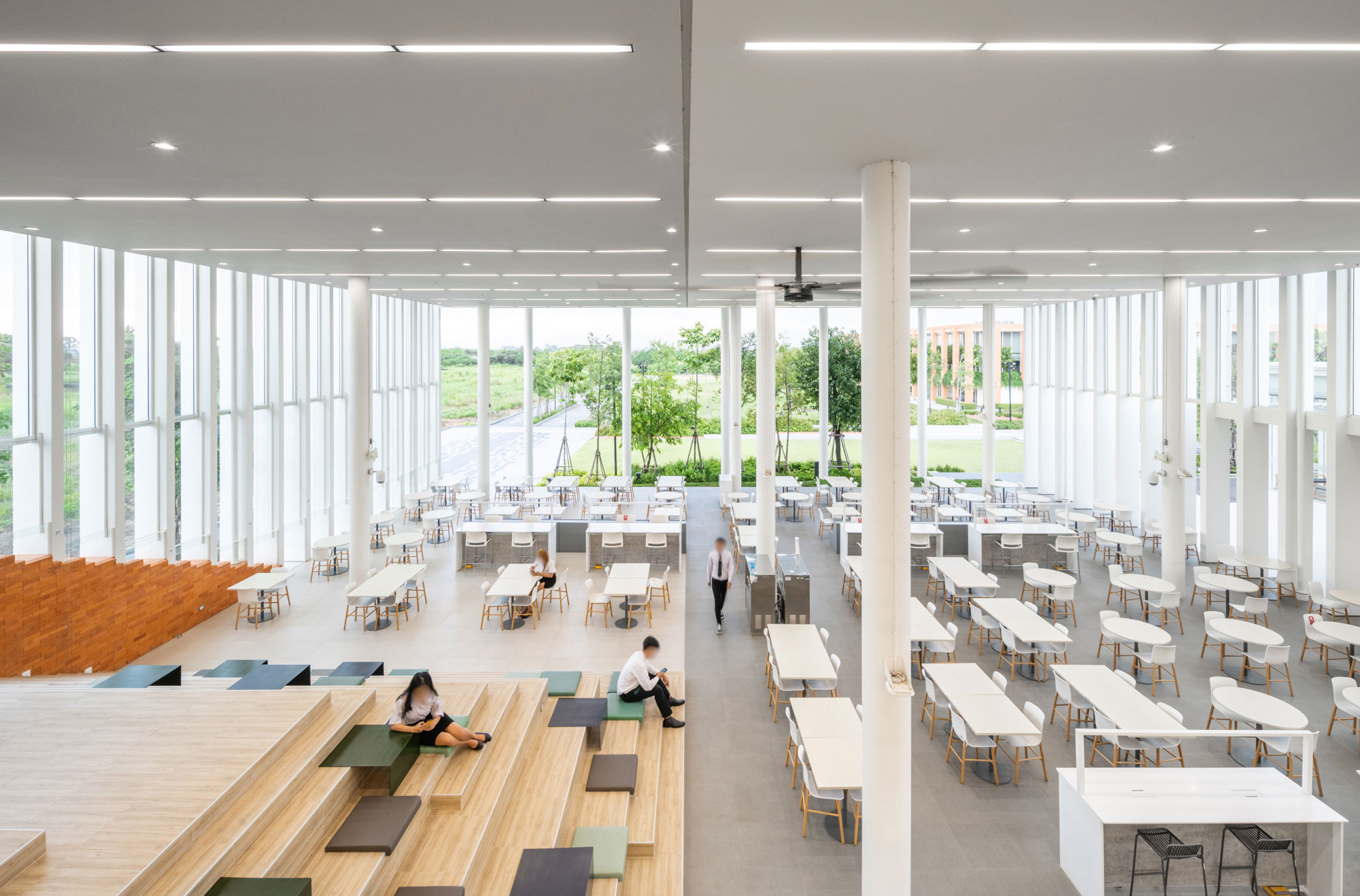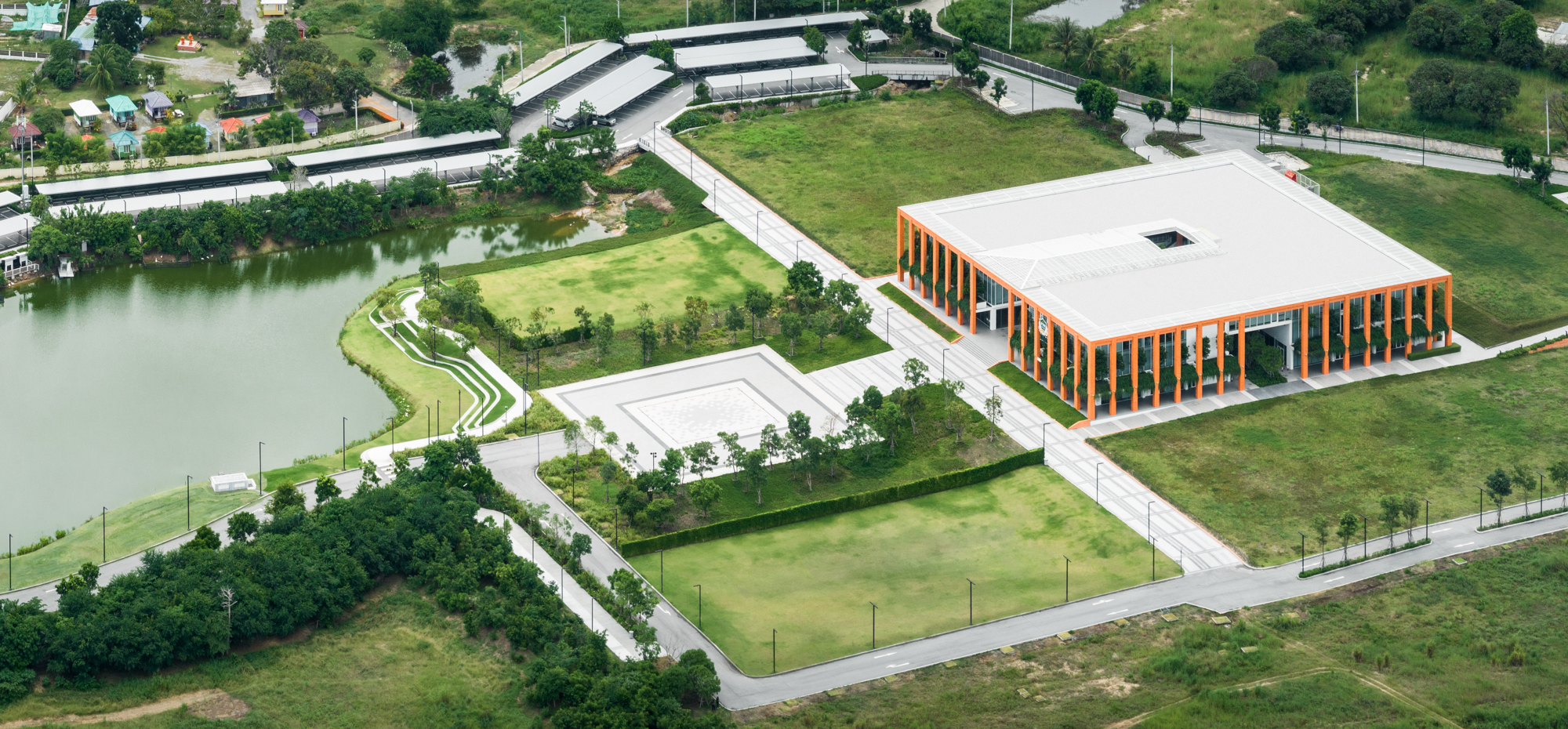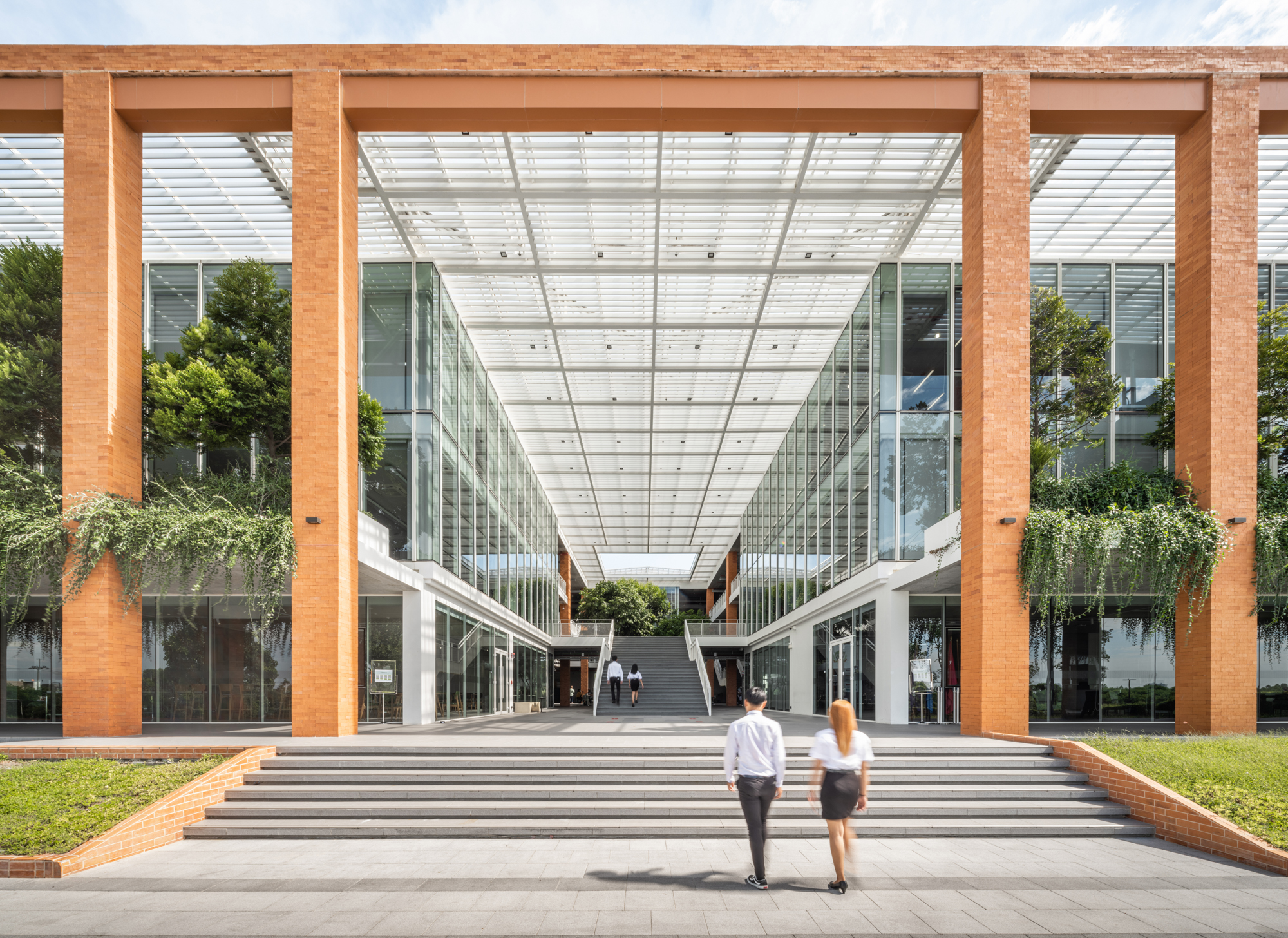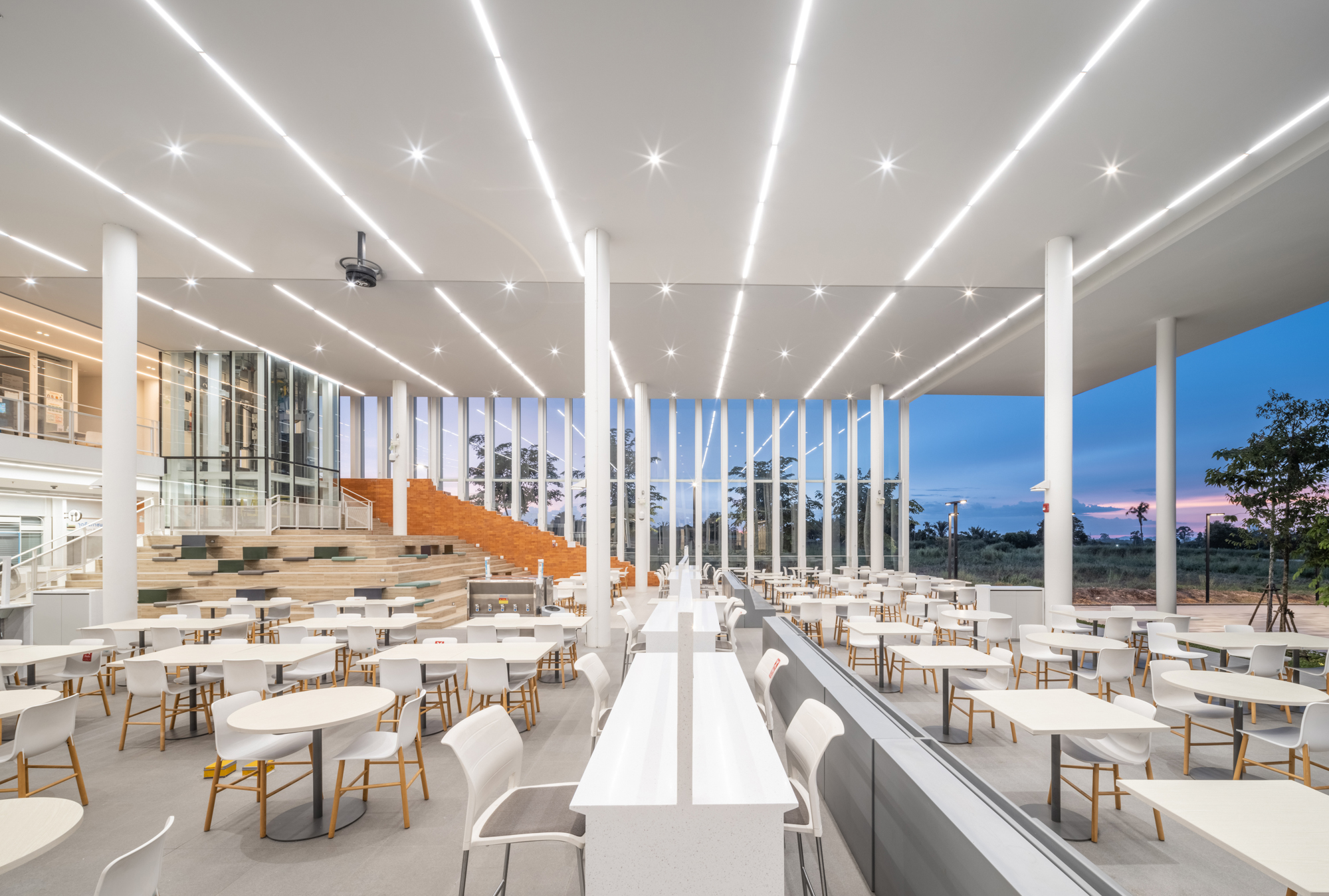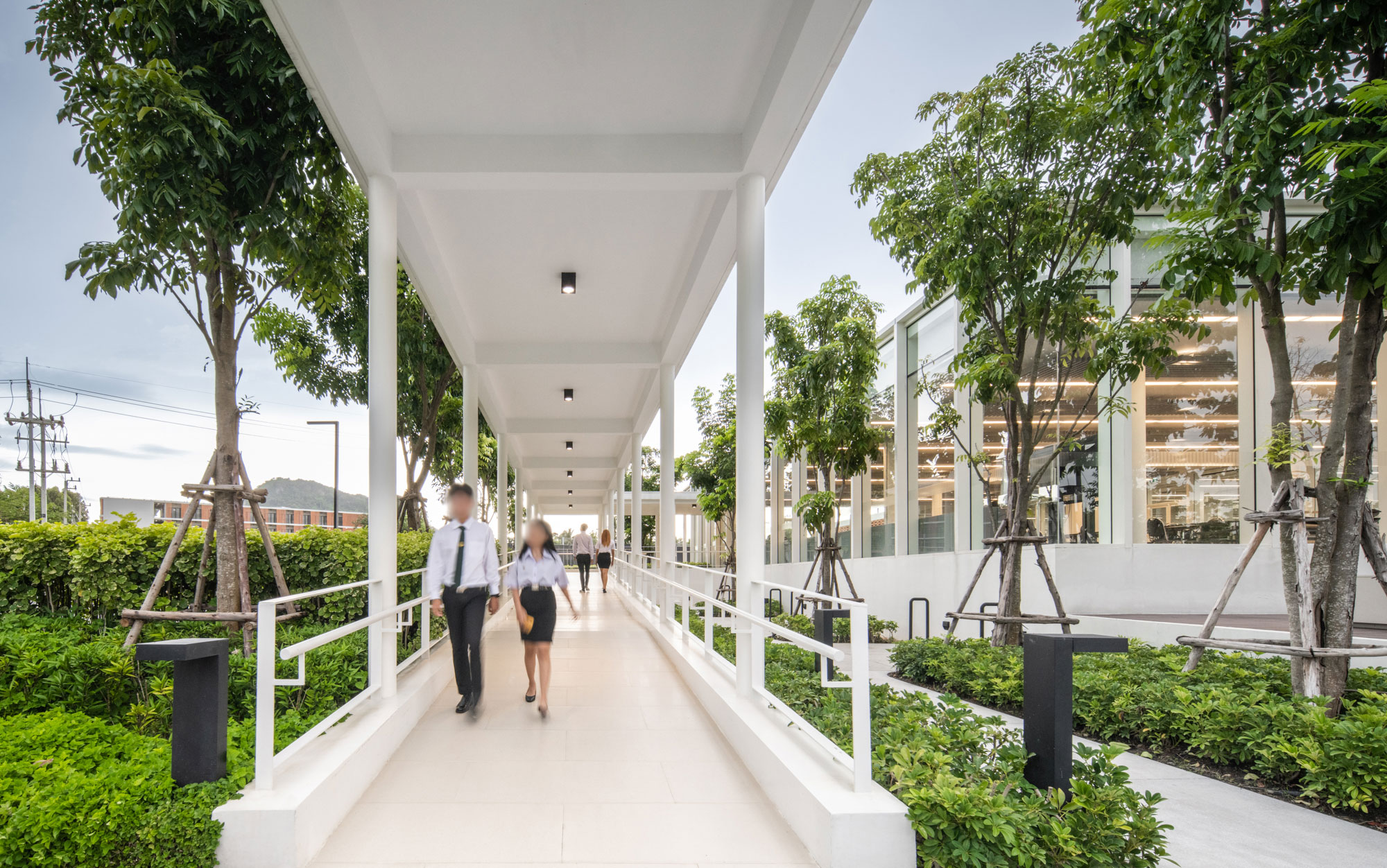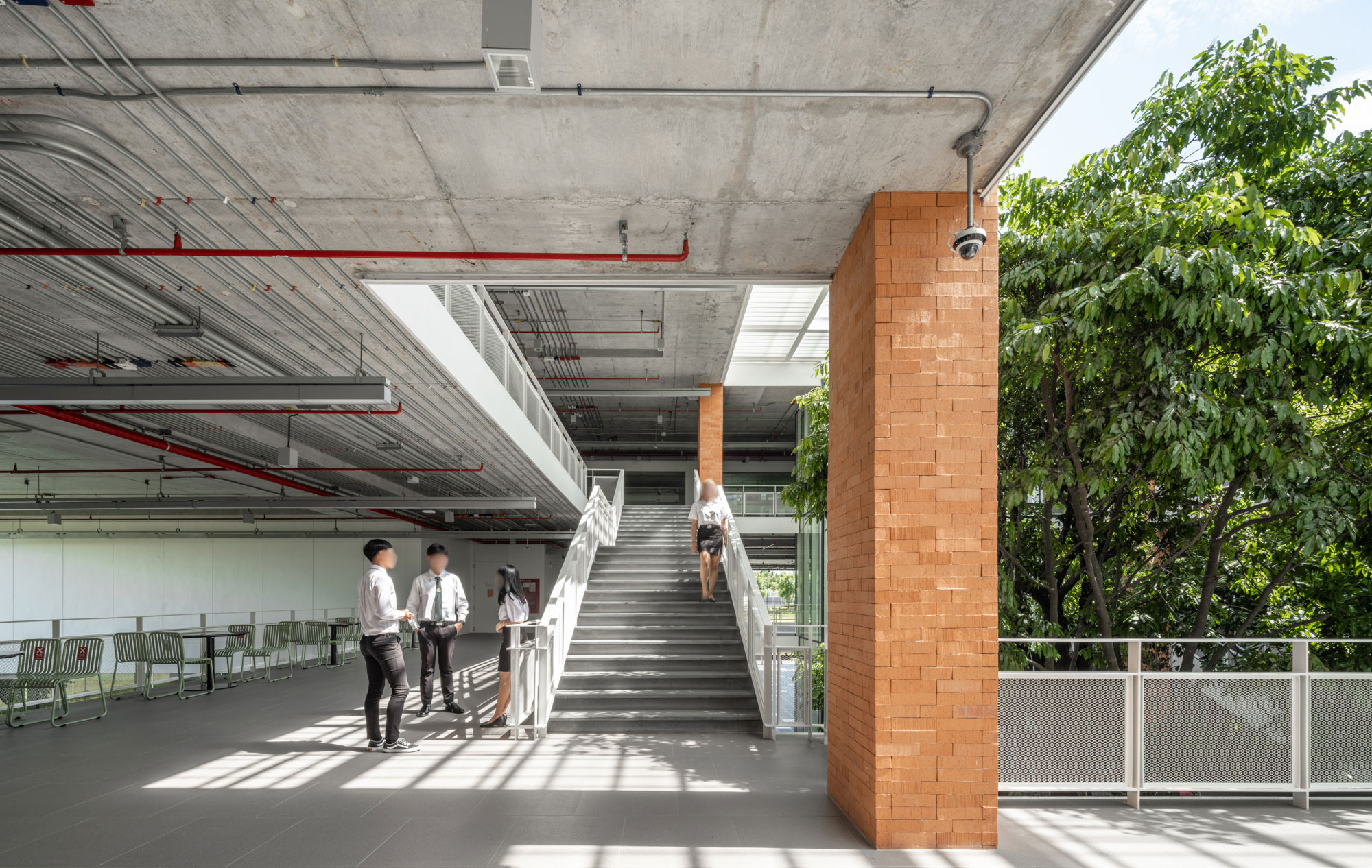

Panyapiwat Institute of Management has a goal to expand the
institution into hub to support the development of manpower to meet the
manufacturing demands of the industrial sector in the Eastern Special
Development Zone (EEC). The campus aims accommodate up to 5,000 students on an
area of 99-rai, with provisions for future development expansions.
The design concept of Back to Basics | Learning with Nature
| Knowledge Is Everywhere was applied to create an environment that encourages
experiential learning through simply living in harmony with nature, and by
incorporating nature to help create an environment conducive to the exchange of
knowledge and experiences. With a focus on creating collaborative spaces for
students and teachers within the natural environment, users are able to gain
knowledge, exchange ideas and create new innovations. This emphasizes the
concept of Knowledge is Everywhere, not just the classroom. There are also
spaces that support the latest technology in learning, as well as various areas
which can be easily adapted to accommodate a wide range of uses.
This project showcases the concept of Passive Design
Architecture since the project's inception, from the Master Planning to
architectural design, M&E systems and landscape architecture. All this facilitates
study and connections with nature. Focusing on sustainability and preserving
nature, careful planning of the building uses and orientation reduce heat and
minimize the need for air conditioned spaces. The Master Plan incorporates
green spaces between buildings, and encourages the use of renewable resources,
such as rainwater retention and reusing gray water. Green roofs reduce heat
within the buildings as well as the heat island effect in the surrounding
areas. The project design is intended to raise user awareness of energy
conservation measures, for example, by allocating parking spaces and promoting
the use of bicycle lanes.
Furthermore, the utilization of natural raw materials
requires less complicated manufacturing and construction processes. The use of
chemicals, such as external paint, was also limited promote the project's
environmentally friendly image. Landscape design which emphasizes the use of
native plants reduces maintenance and grows well organically. This is inspired
by Dr. Miyawaki's concept of natural forest planting, in which large trees are
planted from seedlings rather than transplanting large trees onto the project.
This method ensures the sustainability and longevity of the trees into the
future.
PIA Interior
TK Studio
Lumpini Wisdom and Solution
iECM
CH. Karnchang – Tokyu Construction



In 1980, Prabhakorn received his Bachelor of Architecture degree from Chulalongkorn University. He continued his education at the Catholic University of America in Washington DC, where he graduated with a Master of Architecture degree in 1984. Whilst in Washington DC, Prabhakorn worked at Robert Schwinn & Associates in Maryland before returning to Thailand and joining A49 in 1985. At A49, he has been responsible for a wide range of projects ranging from mega complexes and high-rise buildings to houses. Most of these are located in Thailand, whilst others are located in other countries in the region, including: China, Malaysia, Singapore and Vietnam. His work has also extended outside that region, for example, to the United Arab Emirates and India. All add breadth to the A49 portfolio of work. His main role has been to establish major policies, design concepts and strategic planning initiatives. He was appointed as President of Architects49 Phuket in 2005 and President of Architects49 International in 2006.
Prabhakorn actively served the Association of Siamese Architects (ASA) as its Head of Public Relations from 1992 to 1994, as its Vice President of Foreign Affairs from 1995 to 1997, and as the President of ASA during 2002-2004. He has also participated in many subcommittees for both the ASA and the Architect Council of Thailand (ACT). He is an active Council Member of the ACT, with his present duties for them extending into 2018. He has been an Honorary member of the Japan Institute of Architects (JIA) since 2003.
Prabhakorn has been a key member of A49 since its foundation, and has the honour of being trusted by Nithi Sthapitanonda (the Founder of A49) to be President and Managing Director of 49Group.
In 1980, Prabhakorn received his Bachelor of Architecture degree from Chulalongkorn University. He continued his education at the Catholic University of America in Washington DC, where he graduated with a Master of Architecture degree in 1984. Whilst in Washington DC, Prabhakorn worked at Robert Schwinn & Associates in Maryland before returning to Thailand and joining A49 in 1985. At A49, he has been responsible for a wide range of projects ranging from mega complexes and high-rise buildings to houses. Most of these are located in Thailand, whilst others are located in other countries in the region, including: China, Malaysia, Singapore and Vietnam. His work has also extended outside that region, for example, to the United Arab Emirates and India. All add breadth to the A49 portfolio of work. His main role has been to establish major policies, design concepts and strategic planning initiatives. He was appointed as President of Architects49 Phuket in 2005 and President of Architects49 International in 2006.
Prabhakorn actively served the Association of Siamese Architects (ASA) as its Head of Public Relations from 1992 to 1994, as its Vice President of Foreign Affairs from 1995 to 1997, and as the President of ASA during 2002-2004. He has also participated in many subcommittees for both the ASA and the Architect Council of Thailand (ACT). He is an active Council Member of the ACT, with his present duties for them extending into 2018. He has been an Honorary member of the Japan Institute of Architects (JIA) since 2003.
Prabhakorn has been a key member of A49 since its foundation, and has the honour of being trusted by Nithi Sthapitanonda (the Founder of A49) to be President and Managing Director of 49Group.

In collaboration with Landscape Architects 49, we have extensive experience in master planning and urban design. We have worked for both government and private sectors from large urban development to planning of new university campus.
